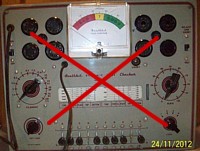Use an EICO 666 as pre-testing device for my digital tester(s)
(Last updated:
25-Mai-2015 11:03
)
Follow @emissionlabs
© COPYRIGHT INFORMATION All Rights Reserved
![]()
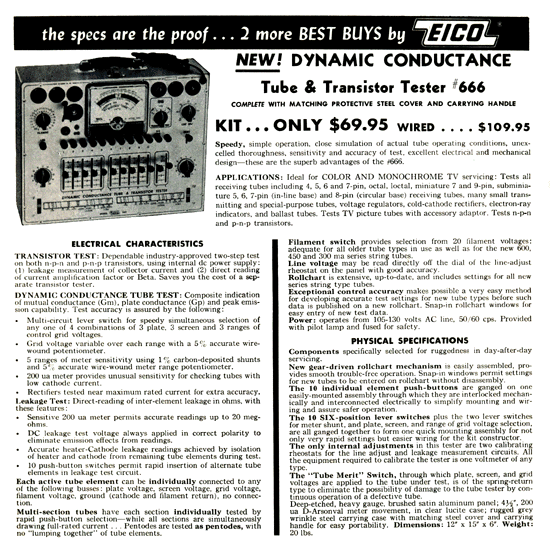
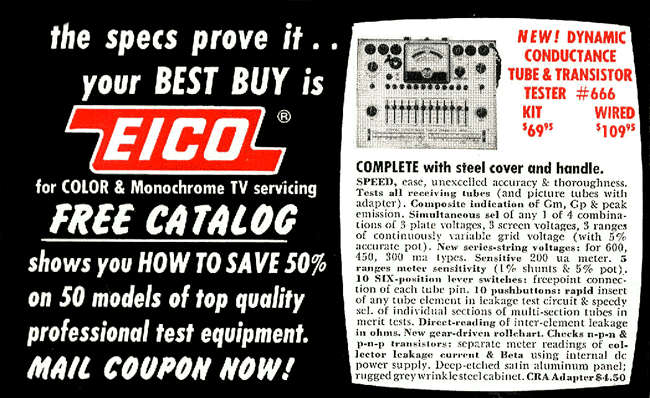
The intention of this project is to use and protect a digital curve tracer, and this EICO 666 seems just ideal for it. Reason is, the wiring inside is well done, normal, and accessible. So not such weird circuits like Hickok uses, and they combine it with the spaghetti cable mess. So with the EICO 666 you have a normal electrical ground, and sapce, and wires with colors that make sense. In fact this whole tester works logicial, and it seems just made by normal people. From the EICO 666, I can tap quite easily the connections for the Plate, Screen, Control Grid an Cathode, whereas I can conveniently leave in the heater cicruit and all sockets, and the shorts + leakage pre-testing circuit with it's power supply. I had to choose between a Hikco, or any other tester, but the Hicoks are so crazy build at the inside, this hurts only to look at that spaghetti. Also the EICO 666 has a metal housing, so that will be easy to check on Hickok how it was stored. If you see a lot of rust at the outside, that unveils it's storage condition. Unlike hickoks with wooden case, that might have been stored humid, with fungus damage at the inside, and a shiny layer of black shoe wax on the outside, for selling it nicely on Ebay. So with the EICO 666 I feel a lot more confident, as I want to use this as a laboratry tester.
The intention is to have following advantages. So let's see if it all works out, during this project, I will just file it here, as I progress.
- Use the nice metal housing of the EICO for all of this. The EICO 666 is compact made, so it won't use as much storage room a the large Hickocks. Also I can lift the EICO on a high shelf, wheras the Hicoks are so heavy and so huge. On the other hand the EICO 666 is not too compact , so this chassis is just fine for my needs
- The 666 has all older tube sockets, like 4 pin, 5 pin, etc. The later model 667 had those sockets removed.
- Use the original mains transformer for heating. So I can choose any heater voltage I like.
- Use the roll chart for the tube settings, so I don't need to worry about this, and also I can make no mistakes.
The way to use it, is like this:
- First test the tube for shorts and leakage. ( The EICO circuit is very good for that)
- After that, test if the tube is ok or not, as I have no interest to connect a shorted, or defective tube to a my digital tester.
- Flip a switch, and now I can do curve tracing on a digital tester. (Like the Sofia, uTrace, or any other)
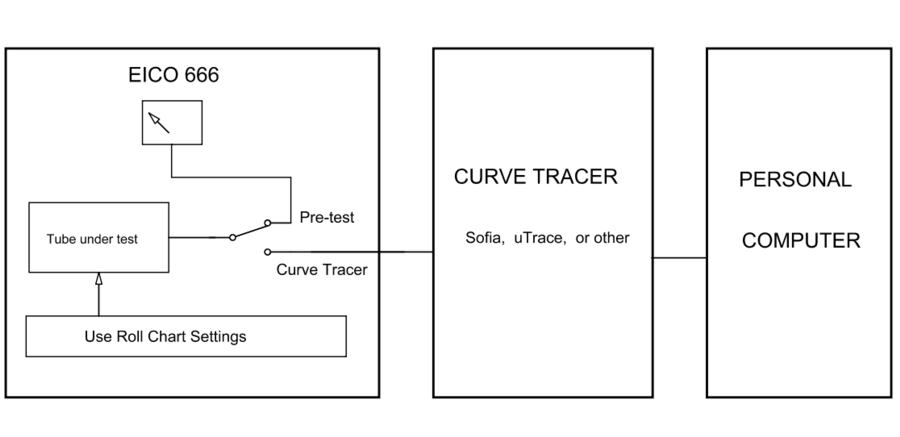
So I wondered, what would be a good piece of hardware for this. Now, such testers with the flip switches are generally useless testers, because they test all tubes like diodes, and we don't want to make only diode curves.
Not Recommended testers look like this. Avoid like monkey plague. You can recognize them by the characteristic row of small switches.
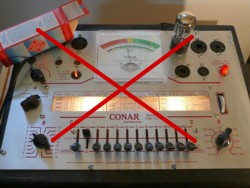 |
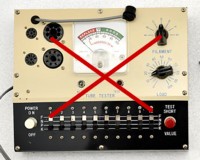 |
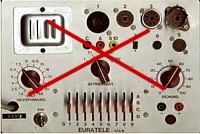 |
|
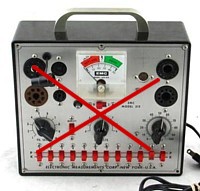 |
Not so for the EICO 666, which looks the same perhaps, but not when you look more in detail. You will see here, the flip swithches have SIX positions instead of only FOUR. Even so with the EICO 666 you can connect each of the 9 tube pins and plate cap to: Anode, Screen, Control Grid, Cathode, Heater or Ground.
The EICO 666 uses a realistic test circuit, and also is able to connect almost any tube, and use any heater voltage there is, also 4V European. So this makes me happy. With that in mind, I bought a relatively cheap EICO 666 on Ebay. Bids started with 100$ and I was the only bidder.
What you need t to know, these testers wer offered as factory wired products, or as a kit, and when you buy it, you don't know which version you are getting. If it was a kit version, I think I would have sold it again, as generally quality inside sich testers is not nice. Well mine seems factory made, so that was a lucky beginning. Also it was never worked on before, as I could see from the deck screws.
After switching it on, basically it worked. Problem seemed however it begins to hum badly when I adjust the mains to the "LINE ADJ" mark, and I need to set it all the way to maximum even though I use 115V, and still I can not get the needls on the "LINE ADJ" mark. (Rather 93V should require the maximum setting) Well, this is a defect. So I set the mains adjustment potentiometer
So that's why it was sold. Probably there is more, but this part we know.
THINGS TO DO NOW:
Check the meter.
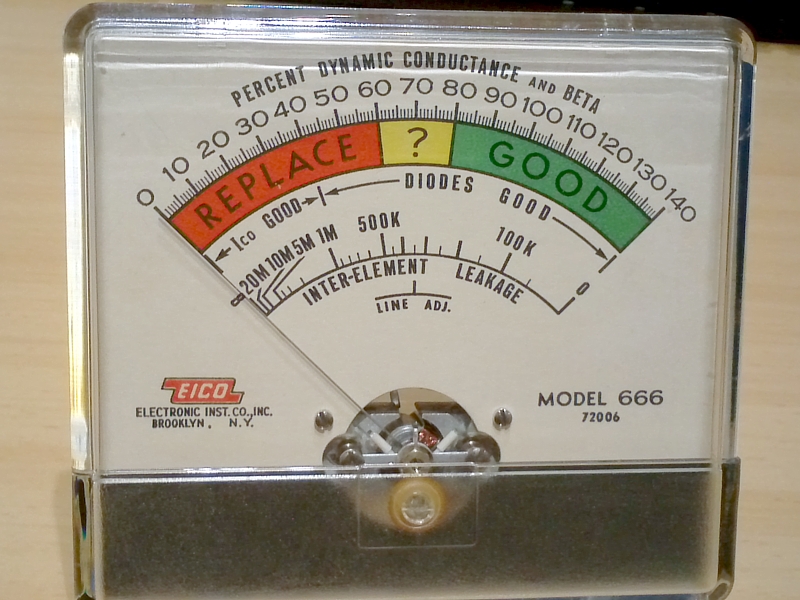
Well it appeared the meter is absolutely perfect. Video1 Video2
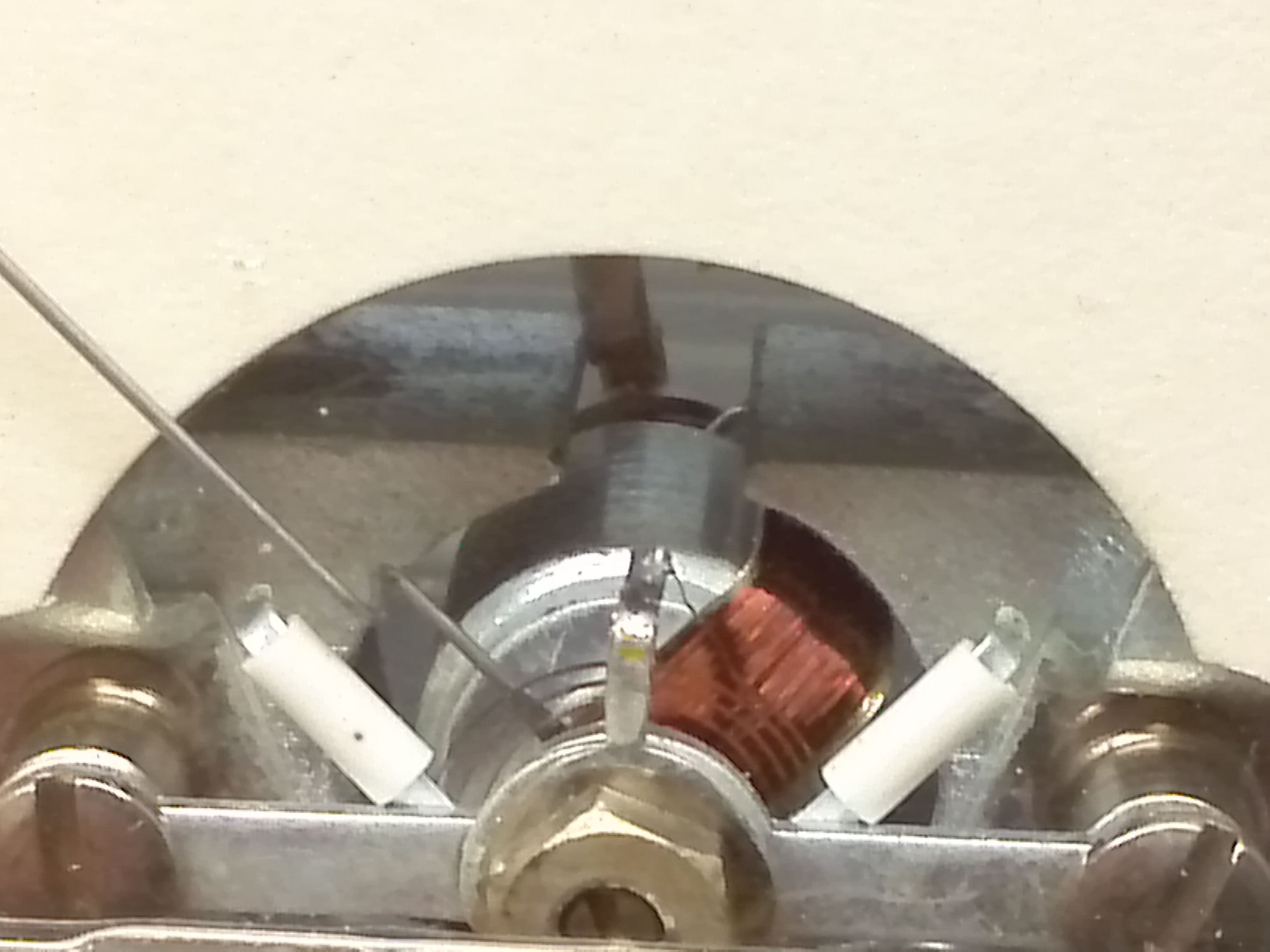
The meter has datecode October 1957. Almost 60 years old, and it is shiny like new. No trace of oxide from the inside, and
no loss of magnetism. The meter is specified 200uA full scale, and that is exactly what it still is now, 200uA. Just FYI, This picture was
made with an 8Mb LGP990 Phone camera. It does better than my expensive Canon camera. It needs less light, will do better
close ups, autofocus works better. This picture was just made in the evening, under a desk lamp. No flashlight. My Canon EOS-1000D can not make such pictures. If I would try with the EOS-1000D without flash, it's just a corny, blurry picture, and magnification is 4x less than this. |
|---|
